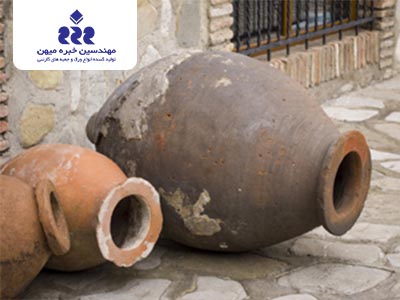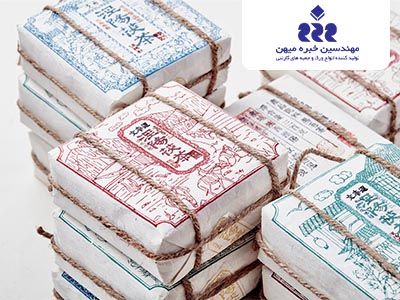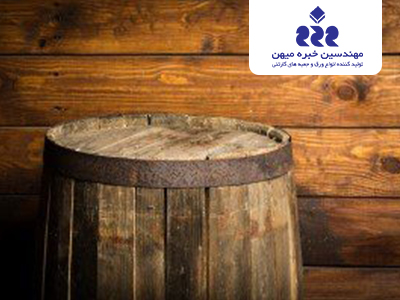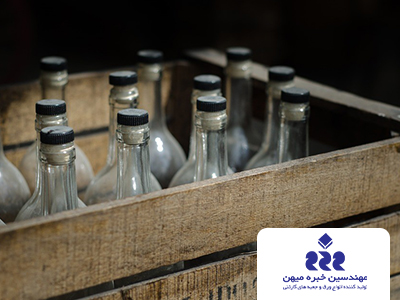Packaging History
- Khobre Mihan co
- Article
- Packaging History
The need to store, preserve, and transport food has existed since the earliest days of humanity. In the past, early humans consumed food at the place it was prepared, and the conditions for food preservation were not available. The containers required for serving food were also used using the skin of leaves, hollow logs, woven grasses, and animal organs. For packaging clothes, fur, felt weaving, and fabrics were used to package products in the form of bags. With the weaving process, grasses and later reeds were made into baskets for storing extra food. With the discovery of ore and compounds, metals and ceramics were developed, leading to other forms of packaging. A brief review of the vast advances in the packaging industry is included in this article.

Paper and paper products
Paper is one of the oldest forms of packaging, also known as “flexible packaging.” Processed mulberry bark sheets were used by the Chinese in the first or second century BC to package foods. Over the next 1500 years, the papermaking technique was refined and spread to the Middle East, then Europe, and eventually to England in 1310. Eventually, the technique arrived in America in 1690 in Germantown, Pennsylvania. But the first papers produced were somewhat different from the papers and packaging of today. Early papers were made from linen fibers and then old linen cloth until paper was made from wood pulp in 1867.
Although commercial paper bags were first made in 1844 in Bristol, England, Francis Wolle invented the paper bag-making machine in the United States in 1852. Further advancements in the 1870s included adhesive paper bags. After the turn of the century (1905), machines for the automated production of printed paper bags were invented.
The first commercial cardboard box in England was produced in 1817, more than 200 years after the invention of cardboard by the Chinese. Corrugated sheets appeared in the 1850s. Around 1900, cardboard transport boxes and corrugated cardboard boxes replaced wooden boxes for trade.
The popularity of paper and cardboard packaging increased in the twentieth century. However, with the emergence of plastic and plastic packaging in the market in the late 1970s and early 1980s, the use of paper and paper products, as well as cardboard boxes, gradually diminished. Recently, though, due to environmental concerns and the growing importance of recyclability in packaging, the popularity of paper packaging and the use of cardboard boxes and cardboard sheets have surged more than ever before.
Packaging in Ancient Egypt
In ancient Egypt, glass was expensive and was considered a precious stone, typically reserved for the royal family. It was this sensitivity to the use of glass packaging that eventually led the Egyptians to discover the technology of glass blowing, which could mold glass into containers for storing water and food.

Packaging in Ancient China
Ancient China is known for its innovation in the development of paper, which is considered the invention of flexible packaging. Historians believe that in the first or second century, the Chinese began to use mulberry bark sheets to package food. In the centuries that followed, as the Chinese perfected their papermaking techniques, paper was also used to package items such as medicine and tea packets.

Packing in the Middle Ages
In the Middle Ages, the popularity of wooden barrels and wooden boxes as storage and transportation vehicles increased. Barrels were commonly used to travel through the oceans to store items such as dry food and fresh water.

Packaging in the Industrial Revolution
During the Industrial Revolution (from about 1760 to 1840) with increasing demand for better quality packaging, it was replaced by major technological advances. This demand for quality was reinforced by a sudden increase in new products. However, it should be noted that many of the packaging materials that arose during this period were expensive. This means that the use of these materials was usually reserved for the maintenance and transportation of luxury goods. Here are some of the notable packaging improvements that occurred during this period:
Napoleon Prize for Food Preservation (1795)
The Rise of Tin and Metal Packaging (1810)
Invention of Cardboard Box (1817)
The First paper Bag-Making Machine
(1879) The First Carton Box
The First Cereal Box (1906)
Modern Packaging
Given the recent shift in focus towards environmental protection, innovators in the packaging industry, including box manufacturing and packaging industries, continually present new ways to reduce the environmental impact of the packaging industry. Recent environmentally-friendly innovations, such as biodegradable and edible packaging, not only make our society safer but also enhance the packaging industry’s ability to adapt to the ever-changing needs and concerns of consumers.
We help our customers stand out in the market by providing superior packaging solutions
To achieve this goal, we continuously invest in developing our relationships with our customers so that we can meet the needs of our customers today and tomorrow. The consulting and design team of Mehen’s expert engineers, after hearing the demands of the customers, examined the different ways of packaging the product and then using the valuable experiences of the past and the current knowledge of packaging and the use of new technologies, the most optimal type of packaging examined. provides to consumers. For more information and consultation with us, click on the free consultation button.

